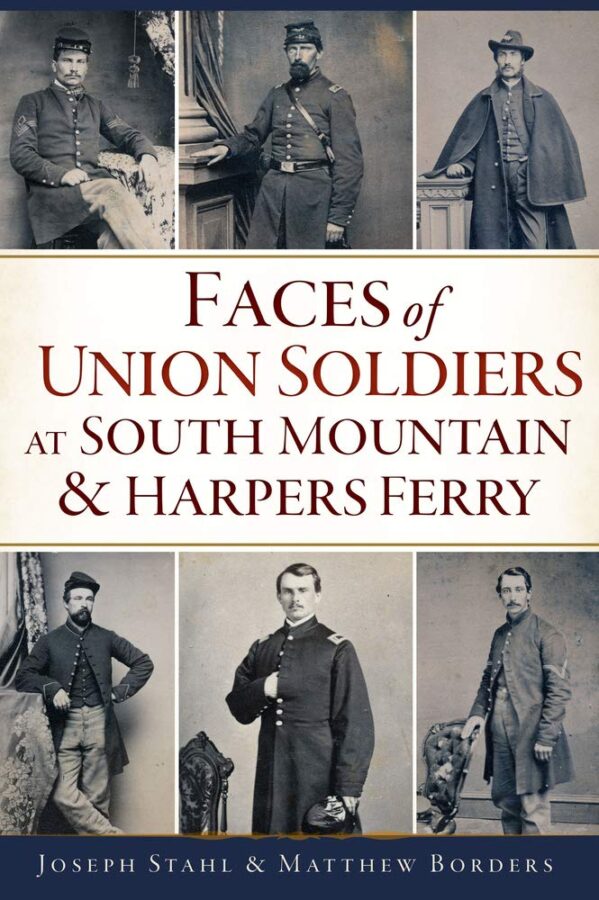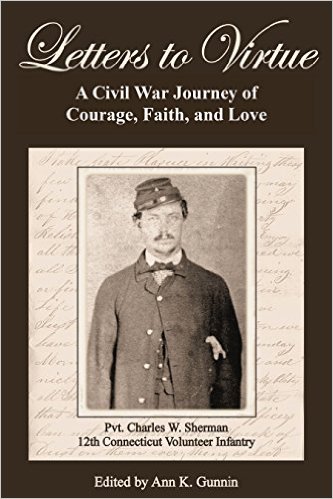Faces of Union Soldiers at South Mountain & Harpers Ferry by Joseph Stahl and Matthew Borders. The History Press, 2021. Paper, ISBN: 978-1467147439. $21.99.
 Bell Irvin Wiley’s books, The Life of Johnny Reb and The Life of Billy Yank, written over seventy years ago, were milestones in Civil War historiography. Combing through thousands of sources, especially soldiers’ letters home, Wiley focused his analysis on the untried yet willing volunteer experiencing war in all its facets for the first time. The image that emerged was of young men going through many rites of passage, including earning “red badges of courage.” The writing of Civil War history was never the same. Today, no historian of the war can ignore the lives of these men and their families.
Bell Irvin Wiley’s books, The Life of Johnny Reb and The Life of Billy Yank, written over seventy years ago, were milestones in Civil War historiography. Combing through thousands of sources, especially soldiers’ letters home, Wiley focused his analysis on the untried yet willing volunteer experiencing war in all its facets for the first time. The image that emerged was of young men going through many rites of passage, including earning “red badges of courage.” The writing of Civil War history was never the same. Today, no historian of the war can ignore the lives of these men and their families.
Faces of Union Soldiers at South Mountain and Harpers Ferry, like the earlier book by Stahl and Borders, Faces of Union Soldiers at Antietam, follows in the Wiley tradition by providing incisive biographies of thirty Union soldiers, all volunteers. It focuses on one soldier from most of the regiments who fought at the critical battles of South Mountain and Harpers Ferry. As the authors put it, “they were common soldiers attempting to do their duty under trying circumstances,” and they did it willingly, obediently, and well.
Recall that at the beginning of the war, Winfield Scott had no confidence that volunteer soldiers would be of any practical use; he supposed that regulars would do most—if not all—of the fighting. The reality, as a continental war of epic proportions unfolded, was quite different; the volunteers put the lie to Scott’s views. In fact, in the view of at least one volunteer general, Jacob Dolson Cox, who commanded many of these men at South Mountain (including future presidents Rutherford B. Hayes and William McKinley), they were actually better soldiers than the regulars. Cox wrote in his memoirs, “after the first year in the field, in every quality which tends to give victory in battle to a popular cause, the volunteer regiment was, in my judgment, unquestioningly superior…it was astonishing to see the rapidity with which well-educated and earnest young men progressed as officers… a campaign or two made them the peers of any officer of their grade.”
The men featured in this book came from several states and divergent backgrounds, but what is most striking is their similarities. They had the same concerns about doing their duty and representing their hometowns and their families with honor and valor. They also had a bit of vanity about their appearance, and the authors go into some detail about how the men made sure they were appropriately dressed and pictured in each of the thirty “carte de visite” featured in the book.
Also, at least some of them, as noted in field reports, wanted it to be known that they were enthusiastic warriors. Several reports spoke of the men cheering loudly as the regiment advanced, wielding their bayonets and giving “the cold, hard steel” to the rebel army opposite them. As General Cox’s aide, Gustavus Bascom, wrote to his father the day after South Mountain, “three bona-fide bayonet charges were made…the wild cheer they sent up when they closed on the enemy with their bayonets seemed to lift me right off the ground. ‘Twas maddening, and we were not men, but demons incarnate.”
By contrast, it was sad to read of the regiments at Harpers Ferry, many of them not only green and raw, but so poorly led by Colonel Dixon Miles. They were clearly willing to fight, but they were put in a hopeless situation and had little choice but to surrender. After being paroled, they had a difficult time re-establishing their reputations because of their defeat. The same was not true of the cavalry regiment which defied Miles and escaped the Confederate onslaught. More information about that group and a picture of at least one of them would have been interesting to see.
Likewise, the book could have used a bit more context about both the battles and the decisions/actions of the Union commanders. For example, writing, “the early loss of the Maryland Heights above Harpers Ferry along with completely ignoring the potential threat of Loudoun Heights doomed the garrison” insufficiently explains how Miles’s inept decision-making led to the largest surrender of men in American history to that point.
Overall, the book achieves very well its objective of personalizing and picturing—literally—the reality of the Civil War for the common soldier during the critical Maryland campaign of 1862. It is a welcome addition to the tradition started by Wiley and is highly recommended.
Eugene D. Schmiel, a retired U.S. Department of State Foreign Service officer, holds the Ph.D. degree in History from The Ohio State University. He is the author of Citizen-General: Jacob Dolson Cox and the Civil War Era (2014).
